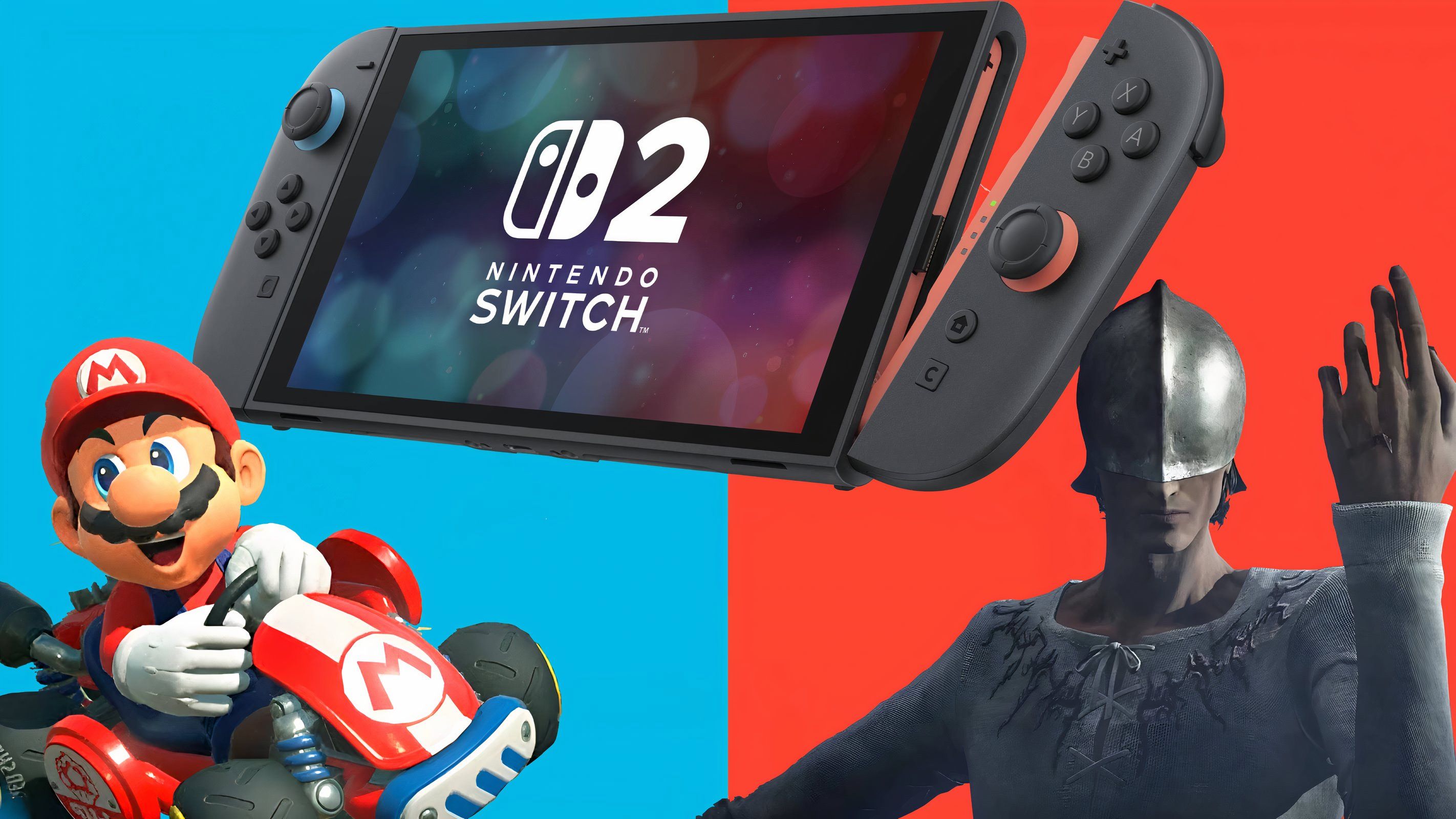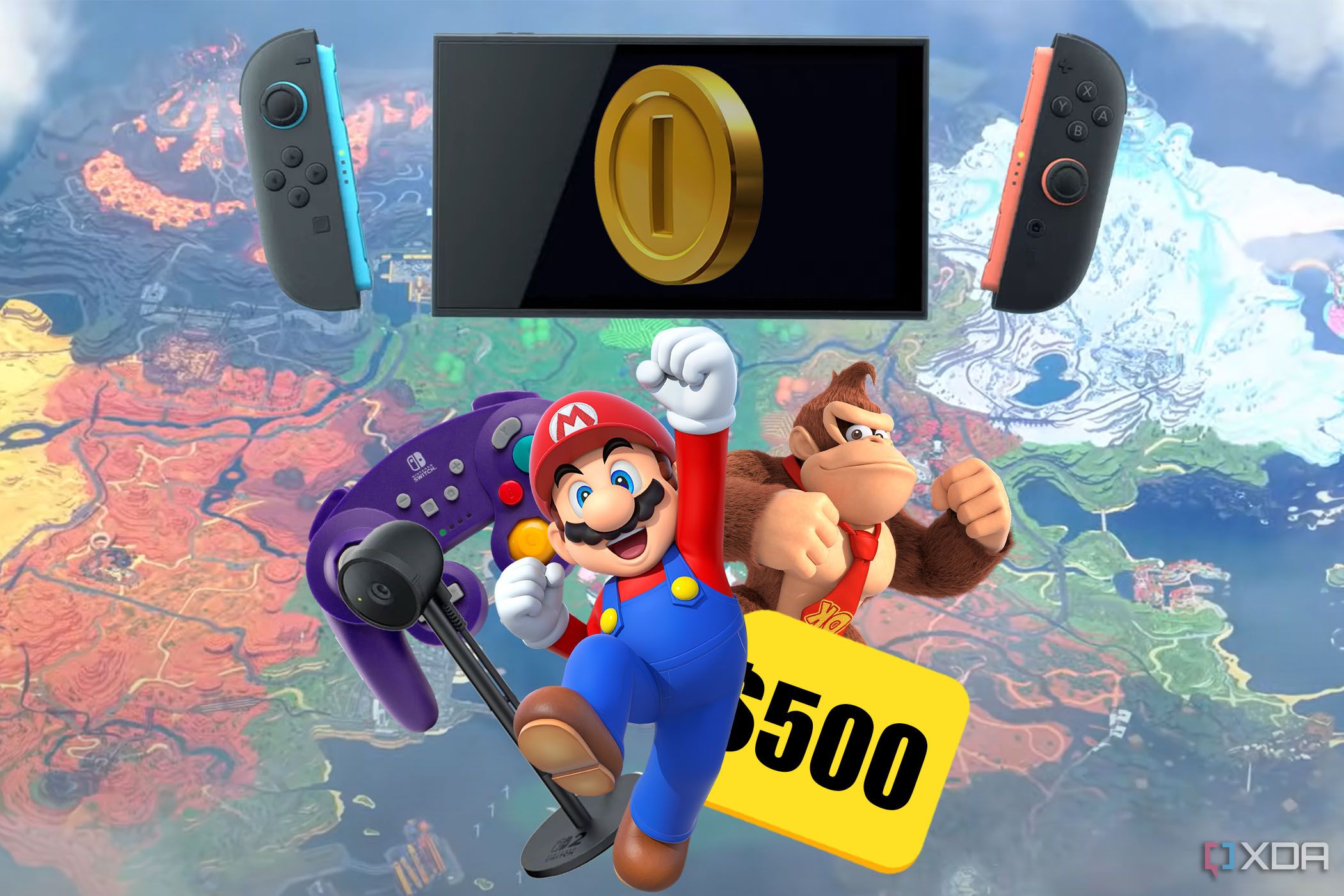The excitement everyone had for the Nintendo Switch 2 Direct left just as quickly as it arrived, when the price of the console was revealed shortly after the livestream ended. But it wasn’t just the price of the console players had an issue with. In fact, we might’ve all gotten over the price of the console by now, if not for the price of the games.
When the PlayStation 5 and Xbox Series X/S launched back in 2020, less than a year later the price of big triple-A games jumped from $60 USD to $70 USD. Most big games that are only available on current-gen consoles have now made that jump, and $70 has become the new standard. When it comes to big Nintendo games in the last five years, The Legend of Zelda: Tears of the Kingdom has so far been the only first-party triple-A title to make that jump.
Now, after the Nintendo Switch 2 Direct, we know that Mario Kart World has once again made a $10 jump, and will cost $80 USD. Compared to PlayStation and Xbox, Nintendo is five years late to releasing new hardware, and now it looks like they’re about to dictate the price of triple-A games across the industry with their new generation. But the new $80 price tag isn’t consistent for every Nintendo Switch 2 game that’s been announced, and there’s a lot of confusion around what the price of these games will be in stores and online. So has Nintendo broken the ceiling on game pricing?

Related
6 games I can’t wait for on the Nintendo Switch 2
From Metroid to Mario Kart, here are 6 Nintendo Switch 2 games I can’t wait to play on day one — and why.
The ceiling has definitely been broken, but not shattered
Not every game can get $80 out of players.
The short answer here is that yes, Nintendo has broken the ceiling on game pricing. But it’s not been entirely shattered. You might wonder what the difference is, and I can tell you that the difference is the fact that not every game can get players to fork over $80. Mario Kart World is one of the few games that can. The Mario Kart series is flat-out the biggest Nintendo series right now. Mario Kart 8 is the best-selling Nintendo game on the Nintendo Switch, leagues ahead of even its next best competitor, Animal Crossing: New Horizons. It is the game that anyone buying a Nintendo Switch 2 will fork over $80 for, because Nintendo can ask that much.
It’s not the only Nintendo Switch 2 game that is asking $80, but it’s the only Nintendo Switch 2 exclusive game (that we currently know of) asking that much. Every other first-party Nintendo title that has an $80 MSRP is an upgraded version of an already existing Nintendo Switch game. If you really want to have the Nintendo Switch 2 version of Super Mario Party Jamboree or The Legend of Zelda: Breath of the Wild, then you can get around paying $80 for those games by already owning them, and just paying the much cheaper upgrade price.
That’s why the ceiling hasn’t yet been totally shattered. And before you run to comment that first-party Nintendo games like Breath of the Wild and Mario Party never go on sale, so you’re not really getting a discount, keep in mind that you can upgrade physical copies of these Nintendo Switch games too. Grabbing a previously-owned copy of any first-party Nintendo game is absolutely the way to go if you want to get the best deal.
There are ways around buying these upgraded versions of Nintendo Switch games so you don’t have to pay $80. If you buy the Nintendo Switch 2 version of Kirby and the Forgotten Land for $80, it’s because Nintendo was hoping you’d do that instead of investigating any other route to get the Switch 2 version of the game, and the same goes for the rest of the upgrades. Basically, it’s a vote-with-your-wallet situation, and it’s on you if you don’t try to be smarter with your money when it comes to these upgrades.
However, with Mario Kart World, the only way to get a discount on it before physical copies are available at pre-owned rates, is to buy it along with the Nintendo Switch 2 console in a bundle. So the ceiling is definitely broken, but not shattered, and what this means for the rest of the industry, and for players, is that we’ll start to see a lot more variables when it comes to the cost of first-party and triple-A games.
Pricing tiers are only getting more confusing
And there are even more variables to come.
So Nintendo knows they can get away with charging $80 for Mario Kart World, and they hope that players fall into the mistake of not looking for other avenues to grab upgraded versions of previous-gen Nintendo Switch games, but does that mean every brand-new, Nintendo Switch 2 exclusive game is going to be $80? Not at all. Donkey Kong Bananza, the brand-new, Nintendo Switch 2-exclusive Donkey Kong adventure from Nintendo, will be $70. Why is it $70 and not $80? Well, in the case of Nintendo, current Nintendo of America president Doug Bowser points says its to do with the company’s “variable pricing” approach.
“We’ll look at each game, really look at the development that’s gone into the game, the breadth and depth of the gameplay, if you will, the durability over time and the repeatability of gameplay experiences,” he told The Washington Post when talking about how Nintendo will go forward in pricing their games. The other part of the equation that Bowser doesn’t go into, but that fans can infer, is the fact that Donkey Kong doesn’t pay Nintendo’s bills the same way Mario does. I suspect that whatever the next Mario 3D platforming game is, that’s likely exclusive to Nintendo Switch 2, comes in at $80.
The same goes for Zelda, which has become one of the biggest parts of Nintendo’s portfolio post-Breath of the Wild, and Pokémon, once we’re past the upcoming cross-generational release of Pokémon Legends: Z-A. But Kirby Air Riders? I’d be genuinely shocked to see it come in at $80. The same goes for the next Metroid game after Metroid Prime 4: Beyond, which is already slated to be $70, as another cross-generational game.
Maybe Nintendo will try to push some of their non-Mario/Zelda series up to the more premium price tag, but they’d do so knowing it would result in fewer sales, and more confusion around what constitutes an $80 game versus a $70 game. But the other wrinkle to all of this, that could push the prices of games, specifically physical games, even higher, is tariffs.
Now, I know there’s a current 90-day pause on the incredibly high tariffs that Donald Trump announced on April 2, and that there’s always a chance that deals between impacted countries and the United States could be made, but the bottom line is we don’t know where the tariff situation will land. How tariffs impact manufacturing game cartridges could push the price of physical games higher than their digital counterparts. And the price of those digital versions could still rise due to tariffs. If you’ve been around the video game industry long enough, you’ll know that console sales are not where platforms make their money. PlayStation, Xbox, and Nintendo all sell their consoles at a loss in the early years of a new console generation, with the intention of making their money back on software. Historically, over the course of a console generation, the cost of making the device gets cheaper, and the revenue from console sales and software sales both start to help the line on their revenue charts go up.
But if making the consoles only gets more expensive, then it’s unrealistic to imagine any of the big-three console makers eating that cost entirely. Some of it will very likely be passed to the consumer, on the hardware, and the software front. There’s plenty of chance that this won’t happen, and at this point it’s impossible to say where everything will end up, but you can’t count out tariffs impacting the price of games across the market, as a way of offsetting increased manufacturing sales. Dumping the increased cost just on the hardware won’t work, and you’d be naive to think they’d only ever impact sales of physical games.
Tariffs or not, the shattering is coming
It’s inevitable, and it’ll probably happen sooner than you think.
Even if tariffs don’t end up having any impact at all, and everything regarding manufacturing costs stays at the status quo, Nintendo breaking a hole in the ceiling of game prices has opened it up to be shattered by everyone else. Grand Theft Auto VI will almost definitely cost $80 now, because like Mario Kart World, that’s the kind of game that can get away with charging that much. I’d also expect PlayStation to make their big $80 move with first-party titles like Marvel’s Wolverine and Intergalactic: The Heretic Prophet. There’s even a chance that Ghost of Yotei is the first to draw an $80 price tag for PlayStation games. In the case of Xbox, I wouldn’t be surprised if it’s The Elder Scrolls VI that bumps the rest of their first-party games up.
What really shatters the ceiling, though, beyond big first-party titles from PlayStation and Nintendo, and major releases like Grand Theft Auto VI that are a generational moment, will be annual sports games. NBA 2K21 was the first game to break through to $70, and I expect Take-Two to set the same standard with NBA 2K26, even ahead of Grand Theft Auto VI’s launch. Once the major sports games have done it, everyone else will follow suit, and the new $80 standard will be set in stone for the majority of triple-A games. As Doug Bowser said, Nintendo will move forward with its variable pricing model, but big third-party releases for the rest of the industry, and first-party games from PlayStation and Xbox, will almost all come in at $80, once every big annual sports game has done it.
Nintendo broke the ceiling, and now we’ll all pay for it.
As I said at the top, the short answer to all of this is that yes, Nintendo broke the ceiling on game pricing. They haven’t shattered it, but that is still coming now that they’ve drawn first blood. If Mario Kart World had come in at $70, then I think there was a strong chance we could have enjoyed a few more years of $70 triple-A games, before the jump to $80 happened at the launch of the next console generation.
That’s not to be, unfortunately. So when you’re complaining about needing to fork over $80 in maybe even just a year’s time, for an otherwise run-of-the-mill game that’s developed and published by a big triple-A studio, you can blame Nintendo. And if you want to keep $70 games around for as long as possible, then we’ll all need to stand together in voting with our wallets. However, I have as much confidence in that working as I do in studios getting rid of predatory microtransactions in video games, because players collectively decided to stop buying them.

Related
4 reasons I hate the Nintendo Switch 2 (but will get it anyway)
The Switch 2 has been shown off by Nintendo and I know that I will be getting it when it is released despite hating it.












